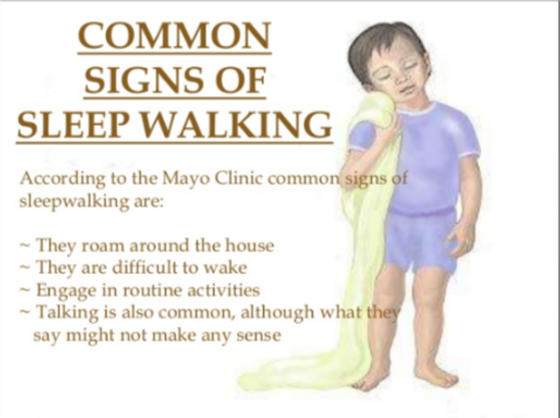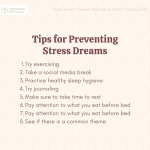Ever wondered at what age sleepwalking is most likely to occur? Well, you’re in luck because we’re about to dive into this fascinating topic. Sleepwalking, also known as somnambulism, is a sleep disorder that affects people of all ages. However, there is an age range where it tends to occur most frequently. So, let’s take a closer look and find out when sleepwalking is more likely to make its nocturnal debut.
During childhood and adolescence, sleepwalking tends to be more prevalent. It often starts between the ages of 4 and 8, but can occur as early as 2 years old. This is an intriguing stage of life where the brain is still developing and sleep patterns are undergoing significant changes. As children grow and experience different stages of sleep, such as deep sleep and REM sleep, their chances of sleepwalking increase. It’s like their sleep adventures come to life as their minds navigate the mysterious realm of dreams and reality. So, if you have curious little ones at home, keep an eye out for any nighttime wanderings.
Now that we have a general idea of when sleepwalking is most likely to occur, let’s delve deeper into the causes, triggers, and potential treatments for this intriguing sleep disorder. So, grab your sleeping mask and get ready to explore the world of sleepwalking like never before. And don’t worry, we’ll make sure you’re wide awake and engaged throughout this sleepwalking journey.

At What Age Does Sleepwalking Occur Most Frequently?
Sleepwalking, also known as somnambulism, is a phenomenon that occurs during the sleep cycle. It is characterized by complex behaviors performed while the individual is still asleep. Sleepwalking can range from simple actions like sitting up or walking around to more elaborate activities such as cooking or even driving. While sleepwalking can occur at any age, it is most common in children, particularly between the ages of 4 and 8. So, what exactly is the age at which sleepwalking occurs most frequently? Let’s delve deeper into this fascinating topic.
Childhood Sleepwalking: A Common Occurrence
During childhood, sleepwalking is relatively common, with studies estimating that around 15% of children experience this phenomenon at some point. Sleepwalking episodes usually occur during the deep sleep phase, which is more prominent in the first half of the night. Children who sleepwalk may exhibit a variety of behaviors, including sitting up in bed, walking around the room, or even leaving the house. While they may appear awake, they are actually in a state of deep sleep and are unlikely to remember the episode the next morning.
Sleepwalking in children is often outgrown as they reach adolescence. As the brain matures and sleep patterns change, the frequency and intensity of sleepwalking tend to decrease. By the time children reach their teenage years, the occurrence of sleepwalking becomes less frequent, although it can still happen occasionally.
Factors Influencing the Occurrence of Sleepwalking in Children
Several factors can influence the frequency and severity of sleepwalking episodes in children. Firstly, genetics play a role, as children with a family history of sleepwalking are more likely to experience it themselves. Additionally, sleep deprivation, irregular sleep schedules, and certain medications can trigger sleepwalking episodes.
It’s important to note that sleepwalking is not considered a medical emergency in most cases. However, it is essential to ensure the safety of the sleepwalker. Parents can take precautions by securing windows and doors, removing any potential hazards from the sleepwalker’s path, and gently guiding them back to bed if they do start to wander.
Adult-Onset Sleepwalking: Uncommon but Possible
While sleepwalking is most prevalent in children, it can also occur in adults. However, adult-onset sleepwalking is relatively rare, affecting approximately 2% of the adult population. When sleepwalking emerges in adulthood, it is often associated with underlying sleep disorders, such as sleep apnea or insomnia. Additionally, factors such as alcohol consumption, stress, and certain medications can increase the likelihood of sleepwalking episodes in adults.
Adults who experience sleepwalking may exhibit similar behaviors to children, including walking around the house, performing routine tasks, or even engaging in more complex activities. Like children, adults who sleepwalk are typically unaware of their actions and have no memory of the events upon waking.
When to Seek Medical Attention for Sleepwalking
In most cases, sleepwalking is a harmless phenomenon that does not require medical intervention. However, there are instances where it may be necessary to consult a healthcare professional. If sleepwalking episodes occur frequently, persist into adulthood, or are accompanied by other concerning symptoms, it is advisable to seek medical attention. Additionally, if sleepwalking poses a safety risk or causes significant disruption to the individual’s daily life, treatment options may be explored.
It’s important to remember that sleepwalking is a complex and multifaceted phenomenon. While it is most commonly observed in children, it can also occur in adults, albeit less frequently. Understanding the age at which sleepwalking occurs most frequently can help shed light on this intriguing topic and provide valuable insights into the nature of sleep disorders. So, whether you’re a concerned parent or an individual experiencing sleepwalking episodes, rest assured that you’re not alone, and there are resources available to help navigate this unique sleep disturbance.
Key Takeaways: At What Age Does Sleepwalking Occur Most Frequently?
- Sleepwalking is most common in children between the ages of 4 and 8.
- It can also occur in adults, with the highest frequency between the ages of 20 and 40.
- Boys are more likely to sleepwalk than girls.
- Sleepwalking episodes often happen during the first few hours of sleep.
- Fatigue, stress, and sleep deprivation can increase the likelihood of sleepwalking.
Frequently Asked Questions
Here are some common questions about sleepwalking and the age at which it occurs most frequently:
1. Can sleepwalking occur at any age?
Yes, sleepwalking can occur at any age, but it is most common in children between the ages of 4 and 8. However, it can also affect adults, especially those who have a family history of sleepwalking or other sleep disorders.
Sleepwalking in adults may be triggered by stress, sleep deprivation, certain medications, or underlying medical conditions. It is important to note that sleepwalking can occur in individuals of any age, but it tends to be more prevalent in certain age groups.
2. What age group is most prone to sleepwalking?
The age group most prone to sleepwalking is generally children between the ages of 4 and 8. During this developmental stage, sleepwalking is more common due to factors such as immaturity of the central nervous system and increased brain activity during sleep.
It is important for parents to create a safe sleep environment for their children to prevent any accidents or injuries that may occur during a sleepwalking episode. Taking measures such as removing obstacles from the bedroom and installing safety gates can help protect sleepwalking children.
3. Does sleepwalking occur more frequently in boys or girls?
Studies have shown that sleepwalking occurs more frequently in boys than in girls. The exact reason for this gender difference is still unclear, but hormonal and genetic factors may play a role.
It is important to note that while sleepwalking may be more common in boys, it can still occur in girls as well. Parents should be aware of the signs of sleepwalking and take appropriate measures to ensure the safety of their children, regardless of gender.
4. Can sleepwalking continue into adulthood?
Yes, sleepwalking can continue into adulthood for some individuals. It is estimated that around 3-4% of adults experience sleepwalking episodes. Factors such as stress, sleep deprivation, and certain medications can increase the likelihood of sleepwalking in adults.
If sleepwalking persists into adulthood or becomes increasingly frequent or dangerous, it is recommended to seek medical advice. A sleep specialist can evaluate the individual’s sleep patterns and provide appropriate treatment options to manage sleepwalking episodes.
5. Is sleepwalking a sign of a sleep disorder?
Sleepwalking itself is considered a sleep disorder known as somnambulism. However, it can also be a symptom of other underlying sleep disorders such as sleep apnea or narcolepsy.
If sleepwalking is accompanied by other symptoms such as excessive daytime sleepiness, loud snoring, or sudden muscle weakness, it is advisable to consult a healthcare professional for further evaluation. Proper diagnosis and treatment of any underlying sleep disorders can help alleviate sleepwalking episodes.
The cause of sleepwalking and what to do during an episode #shorts
Final Summary: The Age Range for Sleepwalking
After diving into the fascinating topic of sleepwalking and the age at which it occurs most frequently, we can draw some interesting conclusions. When it comes to sleepwalking, it seems that childhood and adolescence are the prime times for this peculiar nocturnal behavior. Research suggests that children between the ages of 4 and 8 are most prone to sleepwalking, with the frequency gradually decreasing as they enter their teenage years. However, it’s important to note that sleepwalking can affect individuals of all ages, including adults.
During childhood, sleepwalking often occurs due to the immaturity of the central nervous system, as well as the deep sleep patterns that children experience. As children grow older and enter their teenage years, the incidence of sleepwalking tends to decline. This can be attributed to the changes in sleep architecture and the development of the brain during adolescence. While sleepwalking is less common in adulthood, it can still occur, usually triggered by factors such as stress, sleep deprivation, or certain medications.
In conclusion, although sleepwalking is most frequently observed in children between the ages of 4 and 8, it can happen at any stage of life. Understanding the age range in which sleepwalking is more prevalent can help parents and individuals be more aware of the potential risks and take necessary precautions. If you or someone you know experiences sleepwalking, it’s always best to consult with a healthcare professional who can provide further guidance and support. Sleep tight and stay safe!


